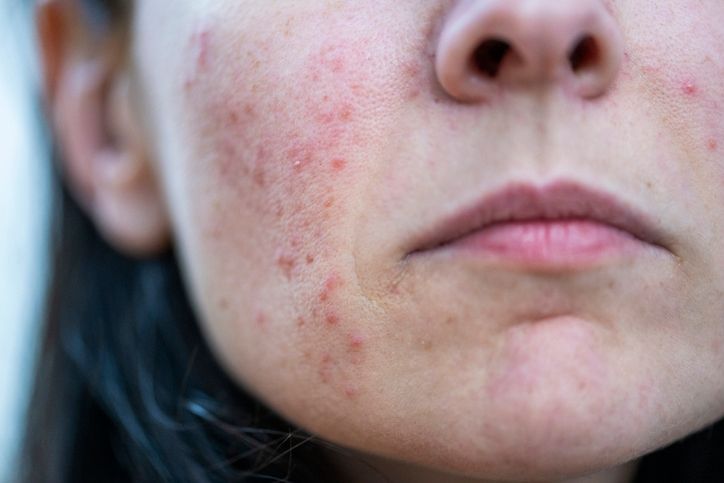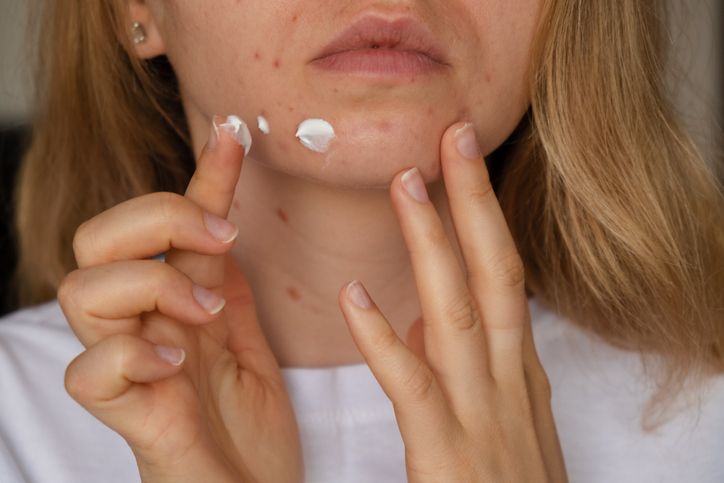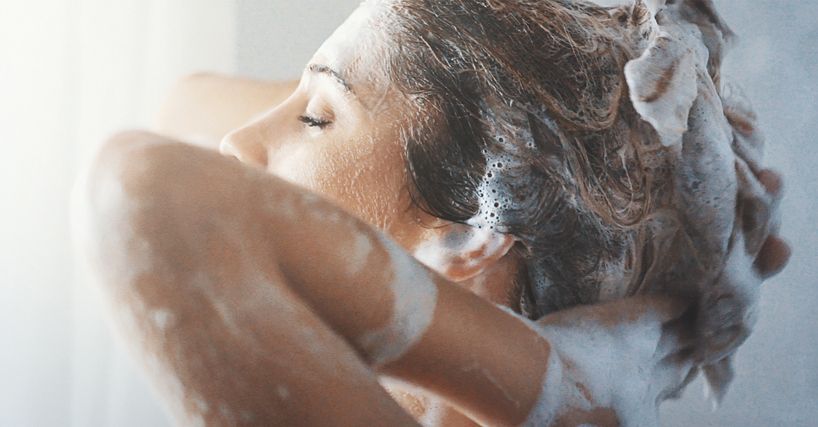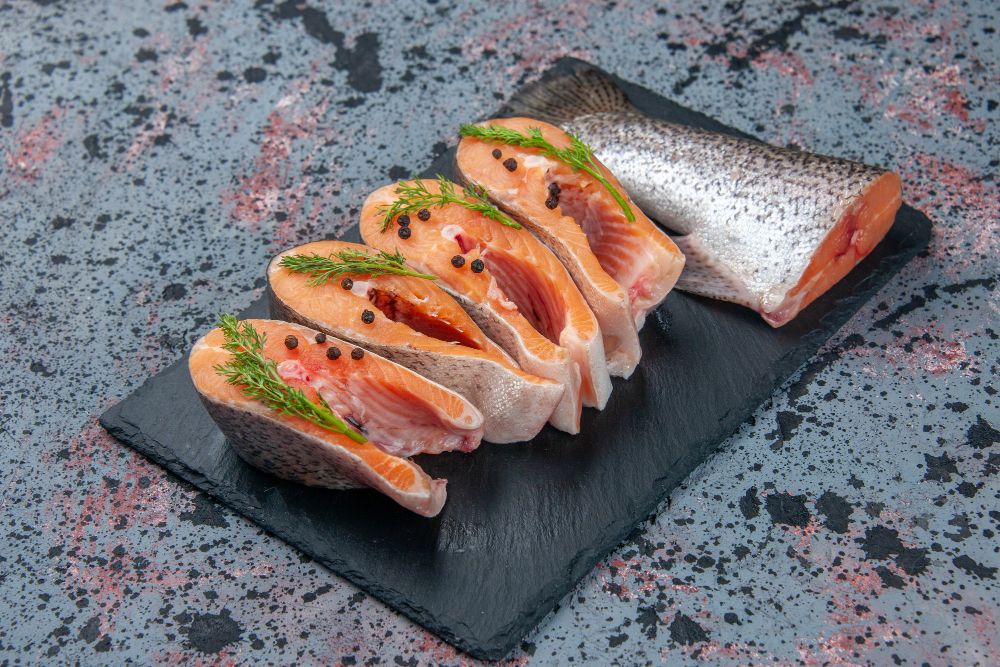Author: Natalie Ng|Updated: 9 May 2025
If you’ve ever woken up to a red zit on your face, you know how frustrating it can be. These painful pimples can show up overnight, swell up fast, and often leave behind redness or even dark spots that take weeks to fade. Whether it’s from clogged pores, excess oil, or a mix of dead skin cells and bacteria trapped in a hair follicle, the result is usually the same: an inflamed, sore spot you want it to be gone fast. Some zits, especially the kind that form deep under the skin like cystic acne or acne nodules, can stick around for several weeks. These aren’t just annoying—they’re also harder to treat and more likely to cause permanent scars if not handled properly. While there are lots of acne products and home remedies out there, not all of them work for every type of acne. So, how do you calm a red, angry blemish without making it worse? Keep reading for 10 easy, dermatologist-backed tips to reduce swelling, ease inflammation, and help clear up that spot without risking more irritation or scarring.

Causes of Red Zits on the Face

Red zits, often referred to as inflamed pimples, are a visible sign of underlying skin inflammation. They typically arise from a combination of factors that disrupt the normal function of hair follicles and sebaceous (oil) glands. Here's a detailed breakdown of the primary causes:
1. Excess Sebum Production
Sebaceous glands produce sebum, an oily substance that helps keep the skin moisturized. However, overproduction of sebum can lead to oily skin, which increases the likelihood of pores becoming clogged. Factors contributing to excess sebum include hormonal changes, particularly during puberty, menstruation, or stress.
2. Accumulation of Dead Skin Cells
The skin naturally sheds dead cells, but when this process is disrupted, dead skin cells can accumulate on the skin's surface. These cells can mix with sebum, leading to clogged pores. This blockage creates an environment conducive to bacterial growth and inflammation.
3. Bacterial Growth
When pores are clogged with sebum and dead skin cells, it creates an anaerobic (oxygen-free) environment that promotes the growth of bacteria, particularly Cutibacterium acnes (formerly Propionibacterium acnes). This bacterium is normally present on the skin but can proliferate in clogged pores, leading to inflammation and the formation of red, swollen pimples.
4. Inflammatory Response
The body's immune system responds to the bacterial overgrowth by sending white blood cells to the affected area, resulting in inflammation. This immune response manifests as redness, swelling, and tenderness around the clogged pore, forming what is commonly recognized as a red zit.
5. Hormonal Fluctuations
Hormonal changes can significantly impact sebum production. Androgens, a group of hormones that includes testosterone, can increase the size and activity of sebaceous glands, leading to more oil production. This is why teenagers, pregnant women, and individuals experiencing hormonal imbalances often suffer from acne breakouts.
6. External Factors
Several external factors can exacerbate the development of red zits:
• Diet: High-glycemic diets and dairy products have been linked to increased acne severity in some individuals.
• Stress: Stress can trigger hormonal changes that increase sebum production.
• Skincare Products: Using products that are comedogenic (pore-clogging) can contribute to the formation of acne.
• Environmental Factors: Pollution and humidity can affect skin health and contribute to clogged pores.
7. Genetic Predisposition
Genetics also play a role in acne development. If your parents had acne, you're more likely to experience it as well. Genetic factors can influence the size and activity of sebaceous glands, the body's inflammatory response, and the tendency for skin cells to accumulate and clog pores.
Understanding these underlying causes is crucial for effective prevention and treatment of red zits. By addressing each contributing factor—through proper skincare, lifestyle adjustments, and, when necessary, medical intervention—you can reduce the occurrence and severity of inflamed pimples.
If you’re ready to calm the swelling and get your skin back on track, here are some effective, dermatologist-backed ways to treat a red zit on your face. Each one targets inflammation, bacteria, or clogged pores — the key causes behind those painful breakouts.

Simple, Effective Ways to Soothe Red, Inflamed Pimples Fast

Tip 1: Apply Ice to Calm Redness and Swelling
A red zit on your face often feels warm, swollen, and painful. That’s a sign of inflammation under the skin’s surface. One of the easiest ways to cool it down is with ice.
How to Use Ice Safely
Wrap a single ice cube in a clean cloth or paper towel. Don’t place it directly on your skin — doing that can irritate or even damage your skin cells, especially if the area is already inflamed.
How Often to Use It
Gently press the wrapped ice on the pimple for 1 to 2 minutes. Then take a 5-minute break. You can repeat this 3 to 4 times in one session, and do it up to three times a day.
The cold helps shrink blood vessels, which lowers swelling and redness. It also numbs the area, so if you’re dealing with painful pimples or acne cysts, this can bring quick relief. This simple method won’t clog pores or add more oil to your skin, and it gives your skin a chance to calm down without using any acne medication or acne product.
Tip 2: Use Over-The-Counter Spot Treatments With Salicylic Acid
A red zit on your face often starts with clogged pores filled with excess oil and dead skin cells. Spot treatments with salicylic acid help clear that buildup by breaking through the blockage and cleaning out the pore. This reduces inflammation and keeps the pimple from getting worse.
What To Look For
Check the label for 0.5% to 2% salicylic acid. This strength helps exfoliate the skin and is suitable for treating acne breakouts without irritating most skin types. It works well for mild acne and helps stop small blemishes from turning into painful pimples or acne cysts.
How To Apply It
• Wash your face with a gentle, non-comedogenic cleanser and pat your skin dry
• Dab a small amount of product directly onto the red bump using a cotton swab or clean fingertip
• Start with once a day, then increase to twice a day if your skin doesn’t react
Avoid spreading it over healthy skin. Salicylic acid works best when applied right to the spot.
Results
You’ll need a few days of consistent use to see visible changes. Salicylic acid reduces swelling and clears blocked pores, which helps calm inflamed pimples and may prevent dark spots or permanent scars. It won’t get rid of the zit instantly, but it can speed up healing if used early.
If your skin starts peeling or feels irritated, cut back to once a day or stop using it. For severe acne, acne nodules, or breakouts that last several weeks, talk to a healthcare provider. You may need other treatments like benzoyl peroxide, oral antibiotics, or prescription acne medication.
Tip 3: Try a Hydrocolloid Patch for Overnight Relief
Hydrocolloid patches help reduce swelling and absorb fluid from red, inflamed pimples. These small, adhesive patches create a seal over the blemish to protect it from bacteria and friction while promoting faster healing.
How Patches Work
The patch forms a protective barrier over the zit, keeping bacteria and dirt out while soaking up excess fluid and oil. As it absorbs this moisture, the patch often turns white or cloudy, showing it’s working to draw out impurities.
This moist environment helps reduce redness and calms the skin without drying it out or causing further irritation. It also prevents you from touching or picking at the spot, which lowers the risk of scarring or spreading bacteria.
Best Way To Use It
Wash your face and dry the skin completely before applying the patch. Any moisture left behind can stop it from sticking. Place the patch directly over the blemish and press down firmly from the center out to seal the edges.
Apply it before any other skincare products, and leave it on for 6 to 8 hours, ideally overnight. It works best on pus-filled pimples or red bumps near the skin’s surface.
Tip 4: Keep the Area Clean With Gentle Cleansing
Red, swollen pimples need a clean surface to heal. Harsh products or scrubbing can make the inflammation worse, so it’s important to wash your face gently.
How To Clean Properly
Use a mild, non-comedogenic cleanser that doesn’t contain alcohol, strong fragrances, or scrubbing agents. Wash your face twice a day with lukewarm water.
Use your fingertips to apply the cleanser with light, circular motions. Don’t rub the skin or use a washcloth on the area. Rinse well, and pat dry with a soft towel.
Make sure to remove all makeup at night using a gentle remover. During the day, avoid touching the affected area with your hands to keep bacteria and oil from spreading to other pores.
Keeping the skin’s surface clean helps prevent more breakouts and gives inflamed pimples a better chance to heal without further irritation.
Tip 5: Apply a Benzoyl Peroxide Treatment
Benzoyl peroxide helps treat red, painful pimples by killing acne-causing bacteria and clearing blocked pores. It’s especially effective for acne that occurs deep in the skin and may help treat cystic acne and acne nodules when used early.
How It Works
This ingredient reduces swelling by cleaning out the pore and drying up excess oil. It also stops bacteria from growing inside the hair follicle, which helps calm inflammation.
How To Apply It
Start with a 2.5% concentration to reduce the chance of irritation. Use it once a day on clean, dry skin. Apply a small amount directly on the pimple, then wait a minute or two before applying any other products.
Avoid applying it to areas of healthy skin. If your skin becomes too dry or irritated, cut back to using it every other day or switch to a lower strength formula.
Benzoyl peroxide can bleach fabric, so use white pillowcases and towels while it’s part of your skincare routine. With steady use, it can help flatten red bumps and reduce the
Tip 6: Consider a Cortisone Cream for Quick Results
Hydrocortisone cream can help shrink red, inflamed pimples fast. It lowers swelling by calming the skin’s immune response and is available over the counter in 1% strength.
When to Use It
This treatment is best for large, swollen pimples that form near the skin’s surface. It doesn’t treat the root cause of acne but can make a painful spot look and feel better in a short time.
How To Apply It
Wash your face and dry the area completely. Then:
• Dab a small amount directly on the pimple
• Gently press it in with your fingertip
• Use it once a day for no more than three days in a row
Using it for too long can thin the skin or cause other problems. For frequent or severe breakouts, ask a healthcare provider about long-term acne treatment options. Cortisone cream should not replace other acne medication if you’re treating ongoing acne vulgaris.
Tip 7: Protect the Spot From Sun Exposure
Sunlight can make an inflamed zit worse and slow down healing. It also increases the risk of dark spots or scarring after the pimple fades.
How To Prevent Sun Damage
Protect your skin by applying a non-comedogenic sunscreen with SPF 30 or higher. Use it daily, and reapply every two hours when outside.
Other ways to reduce sun exposure:
• Wear a wide-brimmed hat to shield your face
• Stay out of direct sunlight between 10 a.m. and 4 p.m.
Keep protecting the area even after the redness goes away. New skin is more sensitive and can darken easily after exposure to UV rays.
Tip 8: Choose Non-Comedogenic Makeup Options
Using the wrong makeup can clog pores and make acne worse. Choose products that won’t block the pore opening or trap oil and skin cells.
What To Look For
Pick makeup labeled as non-comedogenic and oil-free. These formulas are designed not to clog pores and are safer for acne-prone skin.
Mineral-based products often contain calming ingredients like zinc oxide and titanium dioxide, which can reduce redness.
If you use concealer on a red bump:
• Use clean brushes or sponges to apply it
• Avoid touching the area with your fingers
• Remove all makeup before bed
Look for concealers with added ingredients like salicylic acid, which can treat the blemish while covering it.
Tip 9: Take an Oral Anti-Inflammatory Medication
Painful pimples can cause swelling that lasts for several days. Taking an over-the-counter anti-inflammatory like ibuprofen can help ease the pain and bring down the swelling.
How To Use It
Use the recommended dose on the label and take it with food to avoid stomach upset. Don’t exceed the daily limit, and only use it short-term.
This won’t treat acne itself, but it can reduce the size and redness of a single painful spot. If the zit doesn’t improve in a few days or if you have frequent severe breakouts, talk to a healthcare provider about more targeted acne treatment.
Popping pimples can push bacteria deeper into the skin. It also raises your risk of scarring, redness, and long-term dark spots.
Why It Makes Things Worse
When you squeeze a pimple, the pore may tear or become more inflamed. This can turn a minor blemish into a severe acne lesion that takes longer to heal.
Even if the pimple looks ready, leave it alone. Letting it heal on its own, or using proper acne treatment like hydrocolloid patches or spot treatments, leads to better results with less damage.
If you often pick at your skin or have trouble avoiding it, focus on building a simple skincare routine that targets clogged pores, excess oil, and early signs of inflammation. Treating acne early helps prevent the urge to pick and reduces long-term skin damage.
Tip 10: Avoid Popping or Picking the Pimple
Popping pimples can push bacteria deeper into the skin. It also raises your risk of scarring, redness, and long-term dark spots.
Why It Makes Things Worse
When you squeeze a pimple, the pore may tear or become more inflamed. This can turn a minor blemish into a severe acne lesion that takes longer to heal.
Even if the pimple looks ready, leave it alone. Letting it heal on its own, or using proper acne treatment like hydrocolloid patches or spot treatments, leads to better results with less damage.
If you often pick at your skin or have trouble avoiding it, focus on building a simple skincare routine that targets clogged pores, excess oil, and early signs of inflammation. Treating acne early helps prevent the urge to pick and reduces long-term skin damage.
Read More
Book Now to Experience
Acne Treatment
1 Minute Self-Registration
Date should not be before minimal date

A Professional Acne Treatment to Support Healing
If you're dealing with a red zit on your face that keeps coming back or leads to stubborn breakouts, a professional acne treatment can help clear your skin faster and more effectively than home remedies alone. One option designed for acne-prone skin is The Acne Treatment by New Beauty.
This non-invasive treatment targets clogged pores, excess oil, and dead skin cells — the main causes of red, inflamed pimples, including whiteheads, blackheads, and acne cysts. It also helps treat cystic acne and acne vulgaris while reducing the risk of permanent scars.
How the Acne Treatment Works
The process starts with dual spiral suction and drainage technology. This step exfoliates the skin and removes buildup from inside the pores, helping to calm active inflammation and reduce swelling. Once the pore clears, a hydrating serum is infused to soothe the skin, rebalance oil production, and support collagen repair.
Together, these steps help reduce painful pimples, acne nodules, and other severe breakouts that occur deep under the skin. The treatment works to calm the skin’s surface while also helping prevent future acne.
Why This Treatment Supports Faster Results
• Deep pore cleansing unclogs the source of inflammation
• Hydration support calms oil glands and prevents excess oil
• No downtime means you can return to your routine right after the session
• Suitable for most skin types, especially those with moderate to severe acne
• Helps reduce future breakouts, dark spots, and acne scars
Whether you’re treating acne that doesn’t respond to OTC treatments or just want to enhance the effects of your current skincare routine, this treatment can support clearer, calmer skin over time.
Book a consultation to see if this acne treatment is right for your skin and get started on a plan to reduce red zits, clogged pores, and breakouts for good.
New Beauty's Acne TreatmentBook Now to Experience
Acne Treatment
1 Minute Self-Registration
Date should not be before minimal date
FAQ
1. Why does a red zit form in the same spot repeatedly?
A red zit that keeps coming back in the same area is often caused by a pore that never fully heals or becomes repeatedly clogged. This may be due to a buildup of dead skin cells, excess oil, or bacteria trapped deep in the hair follicle. It can also signal an acne cyst or acne nodule that formed deep under the skin and never fully resolved. If this continues, it’s best to see a dermatologist, who may prescribe medication or recommend other treatments to reduce inflammation and prevent scarring.
2. Can stress cause red zits to appear suddenly on my face?
Yes, stress can trigger acne breakouts, especially inflamed pimples like red zits. When you're stressed, your body produces more cortisol, which can stimulate the oil glands to release excess oil. This creates the perfect condition for pores to clog, leading to red bumps and painful pimples. Managing stress levels and following a consistent skincare routine can help reduce stress-related acne breakouts.
3. Is a red zit the same as cystic acne?
Not always. A red zit can refer to any inflamed pimple, but cystic acne is a more severe form. Cystic acne develops deeper in the skin and often results in pus-filled pimples, swelling, and discomfort that lasts for several weeks. These types of acne often need stronger acne medication such as oral antibiotics or oral contraceptives and should be treated by a healthcare provider to prevent permanent scars and other long-term skin conditions.
4. Can diet affect how often I get red zits on my face?
Yes, diet may influence breakouts in some people. High-glycemic foods, sugary snacks, and dairy products can raise insulin levels and trigger oil production in some individuals, which can lead to clogged pores and acne breakouts. While diet isn't the sole cause, eating foods that support healthy skin — like fruits, vegetables, and whole grains — can help lower the chance of getting red bumps or inflamed acne.
5. What’s the best way to treat a red ring around a zit?
A red ring around a pimple can be a sign of spreading inflammation or irritation from touching or applying harsh products. To treat it, cleanse the area gently twice a day using a non-comedogenic cleanser, apply a calming product like a hydrocolloid patch or low-dose hydrocortisone cream, and avoid picking or applying too many products at once. If the redness gets worse or starts to hurt, it may be best to check with a dermatologist to rule out infection or more serious skin conditions related to acne.
Recommended Articles
COPYRIGHT© NEW BEAUTY MANAGEMENT LIMITED 2025. ALL RIGHT RESERVED.



